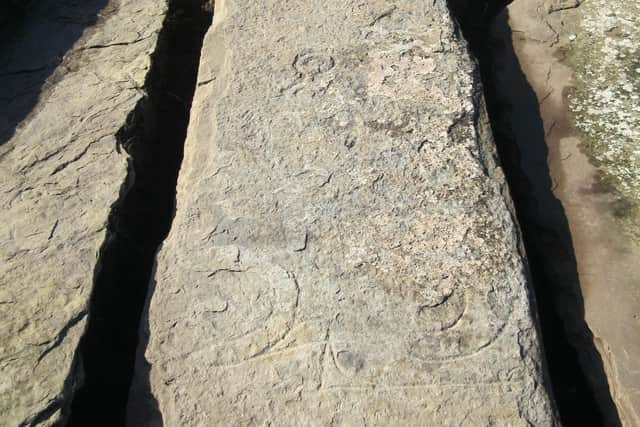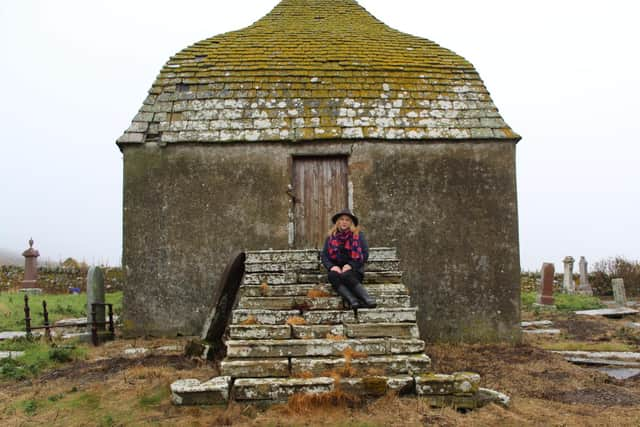Unknown Picitsh Stone found in 'tomb raider' moment by woman searching for Scottish family grave
Fiona Begg Wade was working along a row of flat gravestones at the Mains of Ulbster in Caithness, moving the topsoil off with her boot, when she made the find. The stone, carved with several symbols and believed to date from the eighth century, was previously unknown to archaeologists.
Ms Begg Wade, a former carer, said: "While out researching my family history, I had a tomb raider moment when I uncovered a class one Pictish stone.
Advertisement
Hide AdAdvertisement
Hide Ad“I first noticed the wavy symbols and once it was fully uncovered, the pattern stood out and it looked amazing. It was quite a discovery and I am very proud to have made it.”
Ms Begg Wade sent photographs of the stone to her daughter Jessica and her partner Hamish Lamley, a traditional leatherworker who owns Pictavia Leather in Perth, to help verify her discovery.
Professor Gordon Noble, an authority on the Picts based at Aberdeen University, was then called in to examine the stone.
Ms Begg Wade said: “He came up to look at the stone and I went to meet him. He had been there since the sun came up.”
Prof Noble photographed, scanned and measured the stone, which is carved with two incised symbols, a double disc, a Z-rod and a mirror.


Ms Begg Wade also contacted Lord and Lady Thurso, the land owners, to inform them about the find. She said: "They kindly wrote back and said they were very interested in the work we were doing and particularly the discoveries that had been made."
Ms Begg Wade has long ventured into the area’s graveyards to piece together her own family history and takes her gardening bag – "which is also my cemetery bag” – to aid her searches.
Her top tool is a bulb planter that she uses to pierce the ground to determine whether any stone lies underneath, with a collection of wire brushes also used to remove lichen so she can read inscriptions. Her knee pads also come in handy.
Advertisement
Hide AdAdvertisement
Hide AdThe newly-discovered Pictish stone has since been removed from the site by Yarrows Heritage Trust (YHT), so it can be properly dried, cleaned and eventually displayed, with hopes it will go on show in Thurso.


Already on show in the town is the Ulbster Stone – a highly decorated Pictish stone that was found in the same cemetery. The latest stone could be named the St Michael Stone after the chapel close to where it was found.
Islay MacLeod from YHT, which promotes the archaeological landscape of the area, told the John O’Groat Journal: "It's a very significant find. We know there was a little chapel there dedicated to St Martin. There was another Ulbster stone discovered in the same graveyard, which is in Caithness Horizons, now North Coast Visitor Centre in Thurso. It had been inscribed with 1770 to serve as a grave marker."
Ms MacLeod said the area was particularly rich in prehistoric remains and that she was involved in the uncovering of an Iron Age settlement nearby at Swartigill.
Comments
Want to join the conversation? Please or to comment on this article.